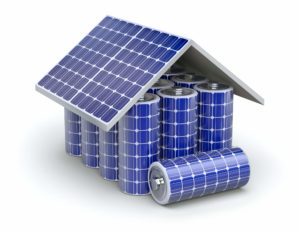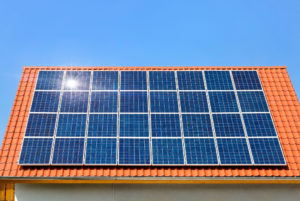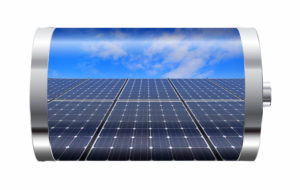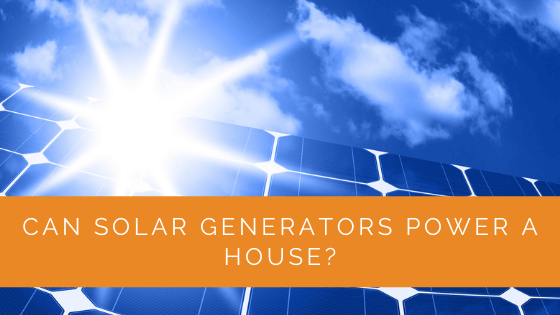In an age where sustainability and energy independence are becoming increasingly crucial, the question of whether solar generators can power a house is more relevant than ever. This article delves into the world of solar generators, shedding light on their types, capabilities, and how they compare to traditional gas-powered generators. As we explore the intricacies of portable solar generators and solar backup generators, readers will gain a comprehensive understanding of each type’s benefits and limitations. This informative piece also navigates through the essential components of a solar generator, such as solar panels, charge controllers, inverters, and batteries, explaining their roles in the efficient functioning of a solar generator system.
Contents
- 1 Key Takeaways
- 2 Types Of Solar Generators
- 3 Components Of A Solar Generator
- 4 How Do Solar Generators Work?
- 5 How Do Gas-Powered Generators Work?
- 6 Solar Generators vs. Diesel Generators
- 7 How To Calculate Your Total Solar Energy Needs?
- 8 How Much Solar Generator Power Do You Require?
- 9 How Long Can Solar Generators Keep Running?
- 10 What Solar Panel Size Do You Need?
- 11 Which Solar Batteries Will You Need?
- 12 What Size Inverter Do You Need?
- 13 Case Study: Implementing Solar Generators in a Residential Setting
- 14 Expert Insights From Our Solar Panel Installers About Whether Solar Generators Can Power A House
- 15 Experience Solar Excellence with Us!
- 16 Closing Notes
Key Takeaways
- A single solar generator is not sufficient to power an entire household, but it can run lower consumption appliances like fans and lights. To power all your devices, you may need to install multiple panels in your solar system.
- Solar generators come in two main types: portable solar generators suitable for on-the-go use and solar backup generators designed for backup power during grid failures.
- To determine the size of the solar generator you need, calculate your total energy consumption, consider the power requirements of your devices, and supplement the system with extra batteries or solar panels as necessary.
Types Of Solar Generators
Generators are much needed in areas that experience frequent power outages. In residential settings, there are two main kinds of solar generators.
Portable Solar Generators
As the name suggests, you can use these generators on the go. They are ideal for RVs, cabins, cars, homes, and boats. You can even use them on a camping trip.
Solar panels recharge the batteries of the portable solar generator. However, you may run into some issues with them.
A portable solar generator might have insufficient wattage capacity to power heavy appliances. Moreover, it may not be able to power multiple devices in a go.
Portable generators remain a popular choice since they are affordable, low maintenance, and do not release carbon dioxide or noise.
Solar Backup Generators
These generators are designed to provide a backup power supply in case the electric grid fails. Backup generators are a great alternative to installing complete solar panel systems.
They are adequate for turning on lights, computers, televisions, and other small to medium appliances.
It usually takes about 48 hours to charge these backup power generators fully. The charging speed will depend upon the amount of sunlight the generator system receives and the size of the solar panels.
Due to their weight, it is not easy to move solar backup generators. While they are large enough to power large properties, they are also quite expensive.

Components Of A Solar Generator
Let us discuss the different components a solar generator consists of.
Solar Panels
Solar panels contain crystal conductors that produce electricity when they come in contact with solar energy. In regards to the generator, their role is to recharge the solar generators’ batteries.
You will be able to recharge your solar battery within hours, depending on the size of your solar panel system.
Charge Controller
The solar charge controller regulates how much energy gets transferred from the solar panel to your battery to prevent overcharging.
Charge controllers typically feature a load input, which enables you to add light-duty appliances to the controller.
It balances the solar battery energy with the load, and in case the battery power gets very low, it automatically cuts off the load.
Inverter
An inverter is essentially a conversion device that transforms DC into AC electricity.
The solar panels, battery, and charge controller all produce direct current (DC) electricity. However, most home appliances work on AC power. Hence, you need an inverter to convert the electricity.
Battery
A battery is simply stored energy. We come across batteries every day, from our phones to laptops, to cars.
Most solar generators use lithium-ion batteries that are robust and reliable. These batteries enable portable appliances to run for a long time, maybe even all day.
How Do Solar Generators Work?
Solar generators work much like batteries—they get charged and then discharged based on the electrical power available to them.
Solar panels are the primary source of charge for solar generators. The panels convert sunlight into direct current, which then passes through the charge controller.
The controller regulates the voltage in the solar batteries. The energy remains in the battery storage until it is eventually used.
When it is time to use the energy, the inverter converts DC into AC so that it can be used by electrical devices.
Solar panels are not the only way to charge the generators since most solar generators provide the option to connect to the grid or allow charging via the DC outlet of the car. However, you’ll get the fastest results with the solar panel network.
How Do Gas-Powered Generators Work?
Gas generators are perhaps the most popular choice for backup power supply in residencies. They can easily be installed alongside solar panels.
In such a generator, the automatic transfer switch detects a power outage and moves the power source from the grid to the gas generator.
Gas generators can run on various types of fuels, such as gasoline, propane, and diesel.
Solar Generators vs. Diesel Generators
Solar generators are great if you’re living away from home, say on a boat or at a camp. However, at home, you can only use them to power devices that have little to medium load.
Diesel generators are an excellent emergency backup power source for residential purposes. If your solar generator is inadequate for high-power appliances, a diesel unit might be helpful.
How To Calculate Your Total Solar Energy Needs?
Research has found that an average American home uses about 893 kWh of power a month. By this figure, the daily consumption comes to about 30 kilowatts or 30000 watts daily.
Even the biggest residentially available solar generators typically have a capacity of 2000 watts. While this is enough to power small appliances, you cannot run air conditioners or other heavy devices.
It is therefore vital to determine your solar energy requirements and the number of solar generators needed.
Firstly, you need to identify the devices you will be using the generator for. We’ve listed the typical power requirements for some commonly used devices.
- Small to mid-sized RVs: 2000W to 4000W
- Emergency backup for a large residence: 5000W to 7500W
- Running multiple household appliances: 8000W to 10000W
You might not be able to find anything larger than a 2000W generator. However, if a single solar generator does not fill your purpose, you can add extra batteries to the generator system. Alternatively, you could utilize solar panels for more power.

Household Appliances Power Consumption
Here are some commonly used household appliances and their power consumption.
- Television: 120W
- Laptop: 250W
- Water Heater: 4500W
- Blue-ray Player: 350W
- Incandescent Light: 60W
- 800W Microwave Oven: 1300W
- 10000 BTU AC: 2200W (starting) and 1500W (running)
- 1/2HP Sump Pump: 2150W (starting) and 1050W (running)
While these figures give you a rough idea, you should always check the actual wattage on the appliance.
How Much Solar Generator Power Do You Require?
Since the power from solar generators is calculated in watts, you simply need to determine the total watts you make use of on a monthly basis.
Once you’ve calculated this figure, you need to add another 10% or 20% to get a fair estimate of how much power is required.
Power consumption of appliances is measured in either amps or watts. Most appliances typically use 120 volts.
You need to remember the simple formula—Amps x Volts = Watts.
For example, if your total wattage is 5000W, you need a 5200W to 5500W generator system.
How Long Can Solar Generators Keep Running?
Like most generators, a solar power station also springs into action as soon as it detects a power outage. Theoretically, solar generators can probably run infinitely.
A solar generator can run as long as it receives power. In case your solar system produces 2000 watts, you can connect it with a powerful generator and have uninterrupted power supply.
You can even attach extra batteries to your generator for more solar power. It will enable you to run additional devices.
A 2000W solar-powered generator can do the following:
- Power a 50″ television for 50 hours.
- Charge a laptop for about 40 hours.
- Support a refrigerator for 30 hours.
- Charge a smartphone for approximately 300 hours.
- Run multiple kitchen appliances.
What Solar Panel Size Do You Need?
The size of your solar panels will depend upon the size of your solar generator. Moreover, it also depends on how long you can go without full power.
If you plan on running only essential or small appliances, 5000W to 7500W will be sufficient. You can get this much power from a solar power station with attached batteries.
You could supplement the system with eight solar panels of 250W each. Every solar panel can generate 1000W to 1300W of power with about 5 to 6 hours of sunlight. Therefore, the entire system can provide approximately 8000W every day, which is enough to keep a solar generator charged.
You can then use the solar panels all day and the generator at night. As and when the power in the generator gets depleted, you can use the solar panels to recharge it.
Which Solar Batteries Will You Need?
Grid-tied systems do not require batteries. However, if you want to stay off-grid, you should be prepared with several batteries for your generator.
Broadly, there are two categories of solar batteries; lithium and lead-acid batteries.
Although lithium-ion batteries are the most expensive ones, they offer the best performance with no maintenance requirements.
The higher the number of batteries you attach to your generator, the more you boost its power. However, the major drawback to this setting is its weight.
When you connect multiple batteries, the total weight of your generator system can reach about hundreds of pounds.

What Size Inverter Do You Need?
All solar generators come with inverters. In general, 1000W to 2000W power stations utilize pure sine wave inverters for enhanced performance.
In case you’re adding batteries, ensure that you connect them to your inverter as well as the power grid. You should ensure that you connect your circuit breaker to your battery wires.
You need to plug the solar inverter into your AC fuse box. Then, you have to wire the generator to your inverter. Such a configuration enables you to switch back to the grid if you have insufficient solar power.
The inverter needs to be connected to the solar panels with cables and connectors. These tools are typically included in the solar panel kit.
Case Study: Implementing Solar Generators in a Residential Setting
Background
At Solar Panels Network USA, we are dedicated to providing sustainable energy solutions tailored to the specific needs of our clients. One recent project involved integrating solar generators into a residential setup to enhance energy independence and provide reliable backup power.
Project Overview
The primary goal was to install a solar generator system that could support essential household functions during power outages and reduce dependence on the grid. This project aimed to demonstrate the practicality and effectiveness of solar generators in a typical residential environment.
Implementation
We began with a thorough assessment of the homeowner’s energy needs, focusing on identifying critical devices that require power during outages. The household’s average energy consumption was calculated to determine the size and number of solar generators needed.
We installed a combination of portable and backup solar generators to provide flexibility and reliability. The portable solar generators were ideal for on-the-go use and smaller power needs, while the backup generators offered more substantial support during grid failures.
The system included high-efficiency solar panels, a robust inverter, and lithium-ion batteries known for their longevity and performance. The charge controllers ensured optimal battery management, preventing overcharging and maintaining efficient energy flow.
Results
The solar generator system successfully provided backup power for essential appliances, including lights, a refrigerator, and communication devices, during a recent power outage. The portable generators also proved invaluable during outdoor activities and trips, showcasing their versatility.
The real-time monitoring system allowed the homeowner to track energy production and consumption, optimizing their usage and extending battery life. The integration of high-capacity batteries ensured that the system could handle peak loads and provide sustained power during extended outages.
The project highlighted the importance of proper planning and the selection of appropriate components to meet specific energy needs. The combined use of portable and backup generators offered a comprehensive solution that balanced mobility, reliability, and efficiency.
Summary
Our project in a residential setting demonstrates the viability of solar generators as a backup power source. By carefully assessing energy needs and implementing a tailored system, we provided the homeowner with enhanced energy independence and reliability. At Solar Panels Network USA, we continue to leverage our expertise to deliver efficient and sustainable energy solutions that meet the diverse needs of our clients.
Expert Insights From Our Solar Panel Installers About Whether Solar Generators Can Power A House
Solar generators are excellent for providing backup power during outages, especially for essential devices like lights and refrigerators. However, powering an entire house requires careful planning and possibly multiple generators or additional batteries.
Senior Solar Installer
Understanding your home’s total energy consumption is crucial when considering solar generators. While they are perfect for low to medium power needs, heavy-duty appliances may require a more robust system or supplementary power sources.
Lead Installation Technician
The versatility of solar generators, especially portable ones, makes them ideal for various settings, from RVs to emergency home backup. However, integrating them with existing power systems for full-home coverage can be complex and may need professional consultation.
Solar Energy Consultant
Experience Solar Excellence with Us!
Trust in Solar Panels Network USA, where our seasoned experts deliver top-quality solar solutions for homes and businesses nationwide. With a legacy of countless successful installations and a commitment to sustainable energy, we’re your reliable partner in the solar journey. Ready for a brighter, eco-friendly future? Call us now at (855) 427-0058 and harness the power of the sun!
Closing Notes
Switching to renewable energy is an excellent idea, and solar power stations are the most common renewable energy source for residential purposes.
If you’re installing solar panels, you should also install solar generators and move on from gas-powered generators.
While running your entire house on solar energy from a generator can be a challenge, it is not impossible.
A standard solar generator system will be insufficient for complete household needs. However, you can attach more batteries to the generator.
Today, there are multiple solar generators available in the markets. Pick the right one for your residence and kick-start your journey with clean energy sources.
About the Author
Solar Panels Network USA stands at the forefront of solar energy solutions, driven by a team of seasoned solar engineers and energy consultants. With over decades of experience in delivering high-quality solar installations and maintenance, we are committed to promoting sustainable energy through customer-centric, tailored solutions. Our articles reflect this commitment, crafted collaboratively by experts to provide accurate, up-to-date insights into solar technology, ensuring our readers are well-informed and empowered in their solar energy decisions.

